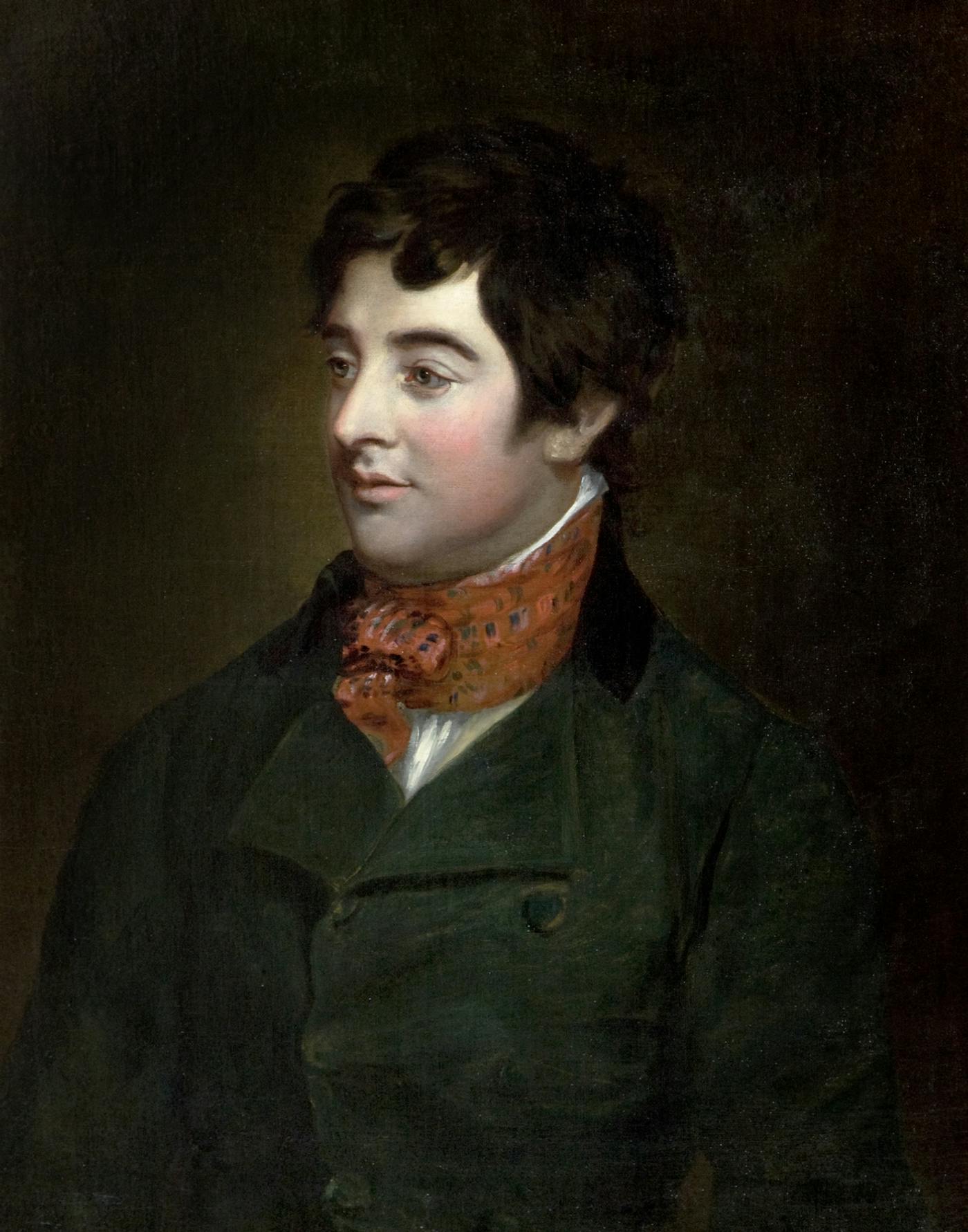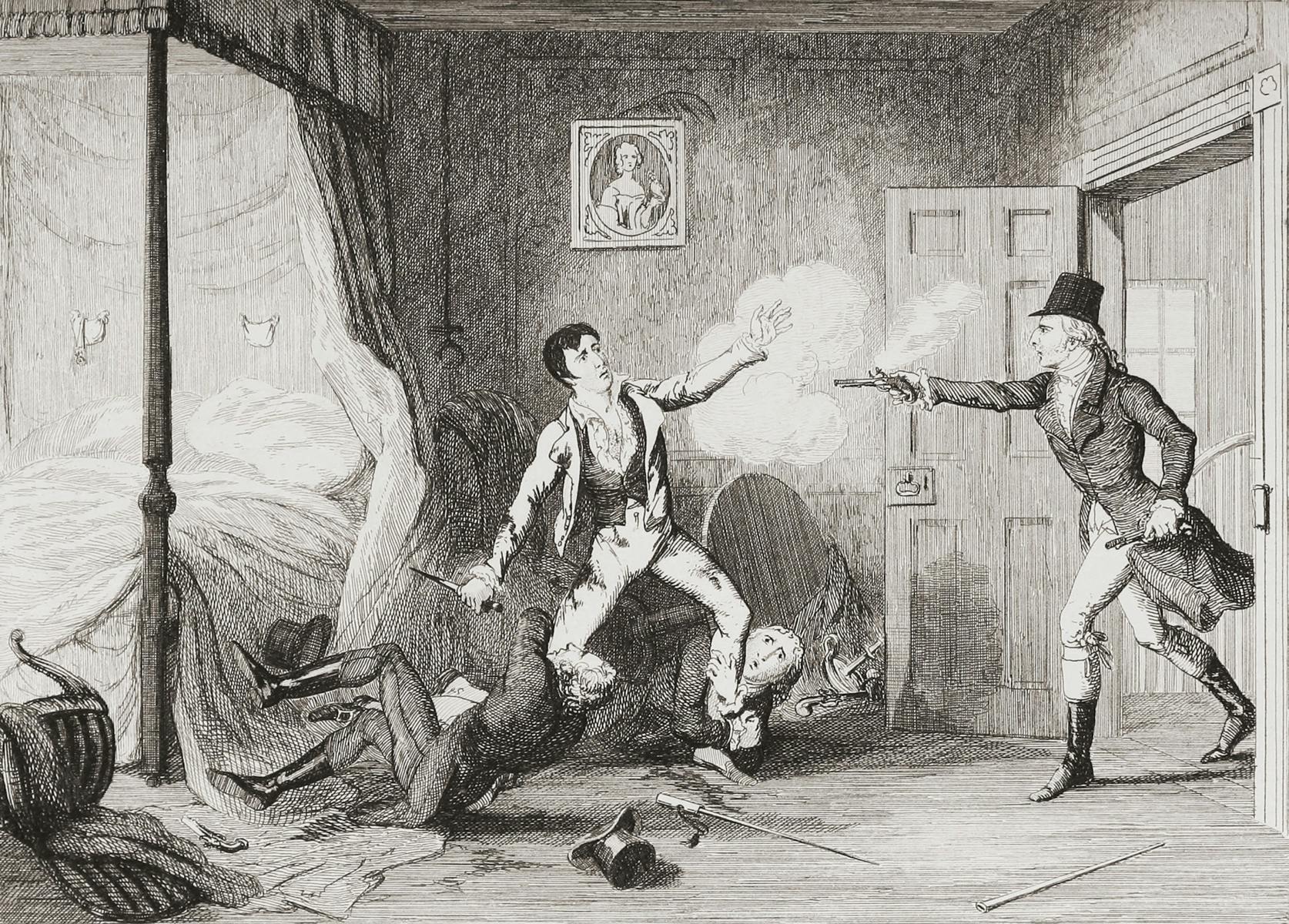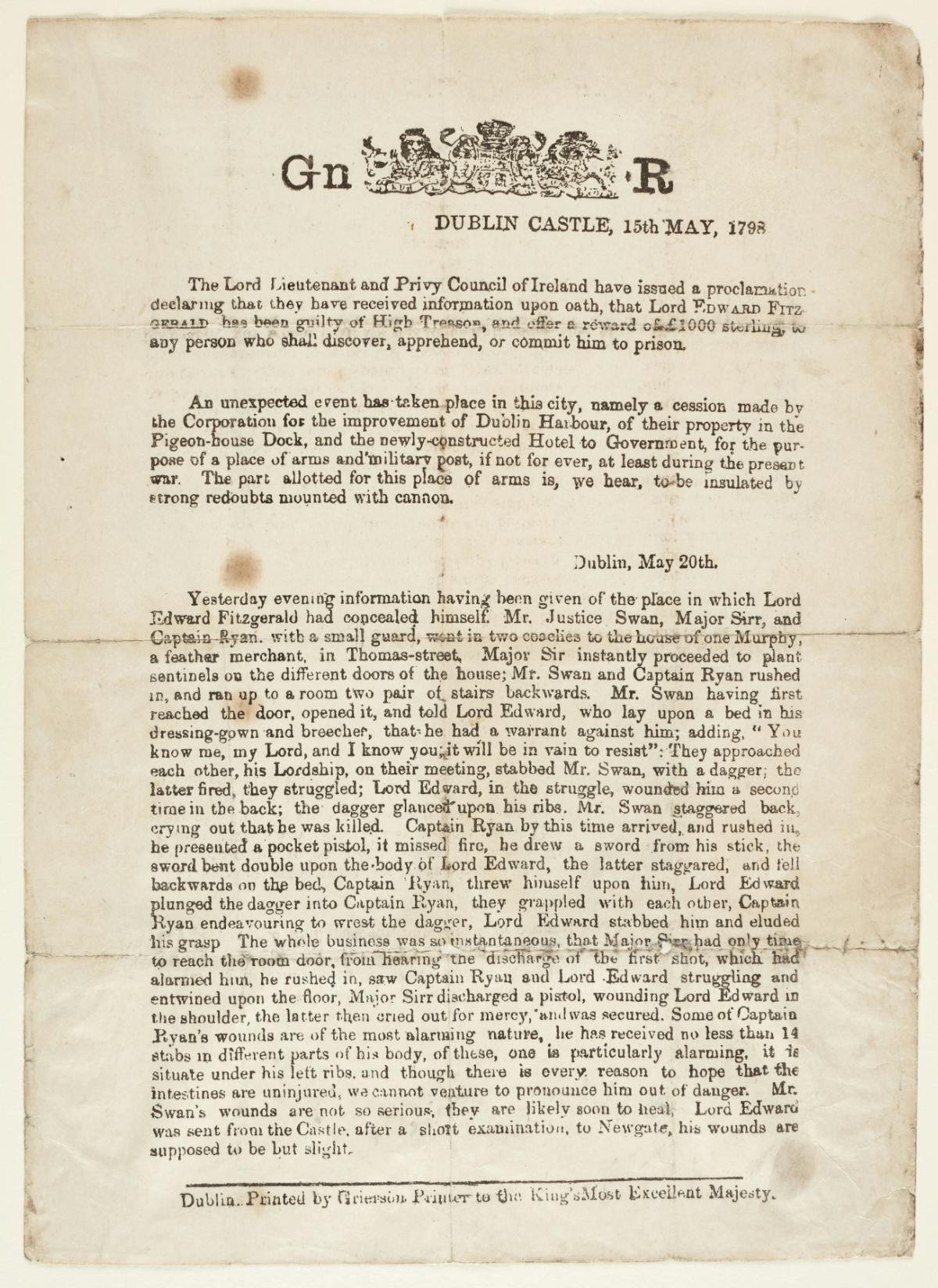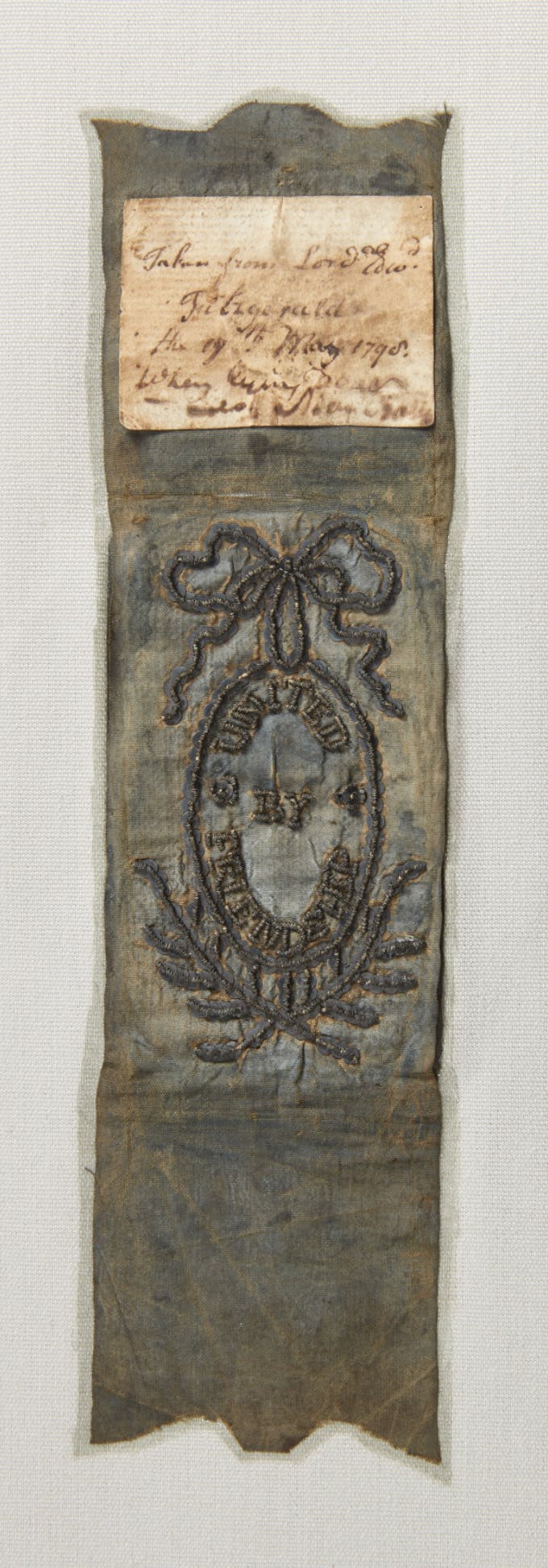



United Irishmen- Lord Edward Fitzgerald
Portrait of a Martyr
Hugh Douglas Hamilton’s portrait of Lord Edward Fitzgerald became one of his most popular paintings following Fitzgerald’s death in 1798. Hamilton painted at least five versions of the portrait and other artists copied it in their own paintings and prints. Supporters of the Irish Revolution mourned Fitzgerald. One poet wrote that the “holy harp” of Ireland had fallen “mute” because of Fitzgerald’s death.
Lord Edward Fitzgerald
Painted by Hugh Douglas Hamilton
ca. 1798
Oil on Canvas
Courtesy of Board of Trustees of National Museums NI
Lord Edward Fitzgerald
Lord Edward Fitzgerald, a member of the Church of Ireland and the Irish titled nobility, became a devoted follower of Thomas Paine after the French Revolution. In the early 1780s, Fitzgerald served in the British Army and was wounded while fighting in the southern United States during the American Revolutionary War. Fitzgerald was a charismatic leader and an organizer of the United Irishmen’s secret armed uprising in 1798. The Irish government found out about Fitzgerald’s military plans through informants. The government offered a £1,000 reward for his arrest. On May 19, four days before the launch of the United Irishmen’s revolt, Fitzgerald was captured in Dublin and shot twice. He died from his wounds two weeks later. Without Fitzgerald, the Irish Revolution lacked a unifying commander.
Arrest of Lord Edward Fitzgerald
Engraved by George Cruikshank
1854
Engraving
Classic Image / Alamy Stock Photo
Arresting Lord Edward Fitzgerald
The Irish government announced the arrest of Lord Edward Fitzgerald with this broadside. Fitzgerald was charged with treason against the British Crown but died in jail from injuries he received during his arrest. The capture and death of Lord Edward Fitzgerald hurt the cause for Irish independence at the outset of the revolt.
Broadside
Printed by George Grierson
May 1798
Paper, Ink
© National Museum of Ireland
Fitzgerald Relic
Leonard MacNally, a member of the United Irishmen, took this ribbon from the dead body of Lord Edward Fitzgerald. In 1819, MacNally presented it as an inspirational relic to Irish General John Devereux who recruited Irish soldiers for Simón Bolívar (the Venezuelan Revolutionary who fought against Spanish rule in South America). MacNally hoped Devereux’s “Irish Legion” would fight to liberate “the oppressed inhabitants of South America and punish their tyrants.” Despite pretending to be friends with Lord Edward Fitzgerald, MacNally helped get the popular Irish leader arrested in 1798. The truth surfaced after MacNally’s death in 1820.
Ribbon
ca. 1798
Silk, Paper
© National Museum of Ireland